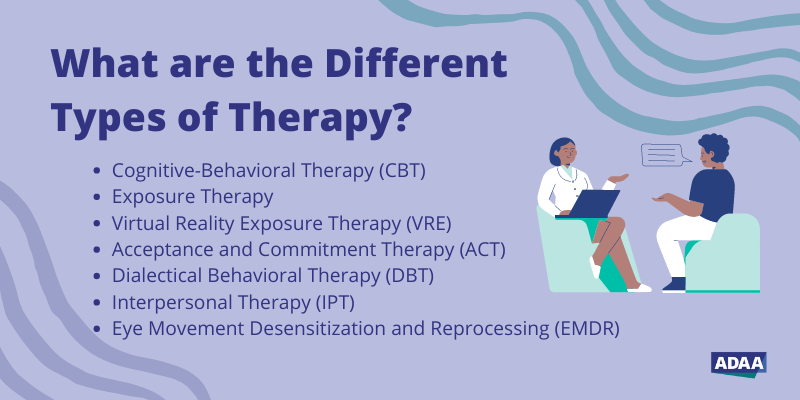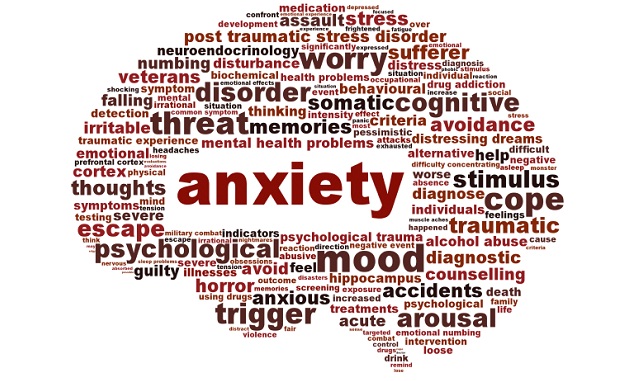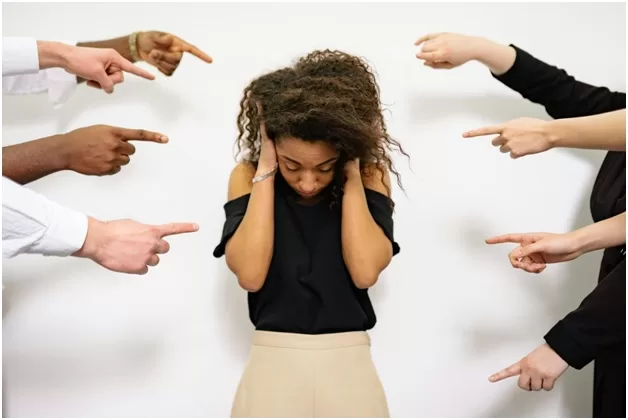Discovering Various Approaches in Therapy for Stress And Anxiety Condition for Long-term Change
When taking on anxiousness disorders, it's important to check out a range of therapy approaches. Each method supplies one-of-a-kind understandings and tools to aid you handle your symptoms properly. You might find that integrating techniques can yield the most effective outcomes. Nonetheless, comprehending the nuances of these approaches is vital to fostering long lasting modification. Suppose the appropriate combination could launch a new degree of emotional well-being for you?
Recognizing Stress And Anxiety Conditions: A Quick Overview
Anxiousness disorders, which influence millions of people worldwide, can considerably impact every day life. You may experience frustrating sensations of worry or worry that appear irrepressible. These sensations can cause physical signs like an auto racing heart, sweating, and even wooziness. Usual sorts of anxiousness problems consist of generalised anxiousness disorder, panic attack, and social anxiousness condition. Each has distinct indications, however they all share a propensity to disrupt your regular and relationships.Understanding the origin triggers of your anxiety is crucial. It might come from genetics, brain chemistry, or life experiences. Identifying your triggers can assist you handle your responses better. It is essential to keep in mind that you're not the only one in this struggle. Many individuals deal with comparable obstacles, and seeking aid is a solid action toward feeling better. By discovering stress and anxiety disorders, you're already on the path to understanding and handling your condition extra efficiently.
Cognitive-Behavioral Treatment: Testing Unfavorable Idea Patterns
In Cognitive-Behavioral Treatment, you'll start by recognizing the adverse thought causes that add to your stress and anxiety. You'll work on changing them with even more positive choices when you identify these thoughts. With each other, you'll develop efficient coping approaches to assist handle your stress and anxiety in day-to-day situations.
Identifying Adverse Idea Triggers

When you experience moments of distress, identifying the certain triggers behind your negative ideas can be necessary in handling stress and anxiety. Beginning by paying interest to situations that prompt sensations of concern or worry. Is it a crowded area, an upcoming deadline, or a discussion with specific individuals? Jot down these instances in a journal. This will aid you determine patterns in your reasoning. Likewise, notice physical experiences that accompany your unfavorable ideas, like a racing heart or rigidity in your chest. By pinpointing these triggers, you gain understanding right into what's fueling your anxiety. Comprehending these connections is the initial action in challenging those thoughts and eventually gaining back control over your emotional feedbacks.
Replacing Ideas With Positives
Testing negative idea patterns is a vital action in transforming your way of thinking and decreasing anxiousness. You might usually find yourself trapped in cycles of self-doubt or devastating reasoning. As opposed to allowing these thoughts dictate your sensations, practice changing them with realistic alternatives or favorable affirmations. For example, when you think, "I can't handle this," move it to, "I can manage difficulties one step at a time." This easy modification can considerably impact your emotion. On a regular basis recognizing and countering these negative thoughts assists develop a much healthier interior discussion. Remember, it requires time and initiative, but consistently practicing this method can result in long-term change, empowering you to deal with anxiety with renewed confidence and strength.
Structure Coping Methods Together
Replacing negative thoughts is only the start of handling stress and anxiety successfully. To develop long-term change, you require to construct coping strategies that encourage you. Cognitive-Behavioral Therapy (CBT) assists you recognize and test those purposeless thought patterns. Together, you and your counselor can explore just how these ideas impact your feelings and behaviors.Start by developing sensible strategies, like journaling or mindfulness exercises, that enable you to challenge anxiousness head-on. When you face your anxieties slowly, you'll find out to respond differently.

Mindfulness and Acceptance-Based Approaches: Growing Present-Moment Recognition
As you browse the complexities of stress and anxiety, incorporating mindfulness and acceptance-based techniques can substantially improve your capability to cultivate present-moment understanding. By concentrating on the present moment, you'll find that you can observe your ideas and sensations without judgment (Counseling services for anxiety). This technique helps you recognize your anxiousness without feeling bewildered by it.Engaging in mindfulness exercises, such as deep breathing, body scans, or led reflections, allows you to ground on your own in your existing experience. Acceptance-based approaches urge you to embrace your feelings instead of battle against them. When you approve your feelings, they lose their power over you.Incorporating these techniques into your day-to-day regimen can transform just how you react to anxiousness. You'll create resilience and find out to navigate stressful situations with better ease. Ultimately, cultivating present-moment recognition lays the structure for long-term change, encouraging you to lead a more satisfying life
Direct Exposure Therapy: Challenging Anxieties Gradually
Exposure treatment assists you confront your anxieties in a progressive way, making it less frustrating. You'll discover techniques to encounter anxiety-provoking situations action by action, while additionally developing coping techniques to handle your reactions. This technique encourages you to take control and decrease anxiety over time.
Gradual Direct Exposure Strategies

When dealing with anxiety, slowly facing your worries can be an effective method to reclaim control. This method, called gradual direct exposure, involves gradually exposing yourself to the situations or things that activate your anxiety. Begin with less challenging scenarios and slowly work your way as much as more difficult ones. If you're afraid of public speaking, you may start by speaking in front of a mirror, after that progress to sharing ideas with a pal, and at some point deal with a tiny group. Each action assists desensitize you to the anxiety, developing your confidence with time. Keep in mind, it's click to investigate important to rate yourself and commemorate tiny triumphes as you move via this procedure, enhancing your capability to take care of stress and anxiety successfully.
Building Coping Techniques
Building efficient coping strategies is essential for handling stress and anxiety, especially as you face your worries slowly - Counseling services for anxiety. One effective method is exposure treatment, where you start by encountering your fears in a regulated manner. Start with less daunting scenarios and slowly work your way up to more challenging scenarios. This steady direct exposure assists desensitize you to stress and anxiety triggers, making them less overwhelming.Incorporate leisure strategies, such as deep breathing or mindfulness, to calm your mind throughout exposure. Track your progress, celebrating little victories along the road to improve your self-confidence. Keep in mind, it's fine to take your time; the objective isn't perfection yet steady improvement. By constructing these strategies, you'll empower on your own to browse anxiousness and embrace life much more fully
Psychodynamic Therapy: Uncovering Origin of Anxiety
Psychodynamic treatment discovers the subconscious mind, exposing the root causes of your stress and anxiety. By examining your ideas, feelings, and previous experiences, this strategy assists you uncover underlying conflicts and unresolved problems that might contribute to your current stress and anxiety. You'll deal with a specialist to check out childhood years experiences, relationships, and psychological patterns that form your reactions today.As you obtain understanding into these much deeper layers of your psyche, you'll begin to recognize how past events influence your existing habits. This understanding can bring about catharsis, enabling you to process emotions you may have suppressed.Through the therapeutic relationship, you can likewise identify defense devices that might have developed with time, offering a clearer course to change. Ultimately, psychodynamic therapy outfits you with the devices to address your anxiety at its core, promoting long lasting change in your emotional wellness.
Alternative and integrative Methods: Combining Techniques for Greater Efficacy
Integrating different therapeutic methods can enhance your journey towards taking care of anxiousness extra properly. By incorporating elements from cognitive-behavioral treatment, mindfulness techniques, and holistic techniques, you can develop an individualized method that resolves your special needs. For example, you may utilize cognitive-behavioral methods to test negative idea patterns while including mindfulness exercises to ground on your own in today moment.Additionally, checking out holistic techniques such as yoga or meditation can advertise relaxation and decrease stress and anxiety signs. This mix enables you to establish better self-awareness and resilience.Experimenting with these diverse methods can assist you find what reverberates most with you. Keep in mind, it's about discovering a harmony that functions, as opposed to staying with a single strategy. This integrative strategy not just supplies prompt alleviation but likewise cultivates long-term skills for handling anxiousness, encouraging you to recover control over your life.
The Function of Assistance Systems: Building Resilience Via Connection
While it may appear that handling anxiousness straight from the source is a solitary trip, having a solid support system can play a necessary duty in your strength. Surrounding on your own with empathetic friends, family, or support system creates a risk-free space where you can freely share your feelings and experiences. When you get in touch with others, you remind yourself that you're not alone in this struggle.These partnerships offer motivation and can provide sensible coping strategies that have helped others. It's also a possibility to get perspective; good friends can help you see situations in a different way, reducing feelings of isolation.Moreover, psychological support fosters a sense of belonging, which can greatly minimize stress and anxiety symptoms. By leaning on your assistance system, you can build durability and deal with difficulties extra properly. Keep in mind, getting to out for assistance signifies strength, and it can make all the difference in your trip toward managing stress and anxiety.
Frequently Asked Concerns
What Are the Common Signs of Anxiousness Conditions?
You could experience restlessness, exhaustion, difficulty focusing, impatience, muscle mass tension, and sleep disruptions. Physical signs and symptoms can consist of rapid heartbeat, sweating, and shivering. Acknowledging these signs early can aid you look for proper assistance and treatment.
For How Long Does Therapy Usually Last for Stress And Anxiety Conditions?
Treatment for anxiousness conditions usually lasts anywhere from a couple of weeks to several months. It really depends on your specific requirements, development, and the techniques your therapist makes use of to aid you handle your anxiousness effectively.
Can Medicine Be Utilized Alongside Therapy for Stress and anxiety?
Yes, medicine can absolutely be used alongside treatment for stress and anxiety. Incorporating both approaches commonly boosts therapy performance, aiding you take care of signs and symptoms while exploring underlying concerns via therapy (Counseling services for anxiety). Constantly consult your medical care copyright for tailored advice
Exist Self-Help Techniques for Taking Care Of Anxiety?
Yes, there are several self-help approaches for taking care of stress and anxiety. You can practice mindfulness, participate in normal exercise, maintain a well balanced diet, develop a regular, and make use of deep breathing strategies to help in reducing anxiousness signs properly.
Exactly how Do I Know if I Required Professional Assistance for Stress And Anxiety?

Comments on “Compassionate and professional therapy for anxiety designed for you”